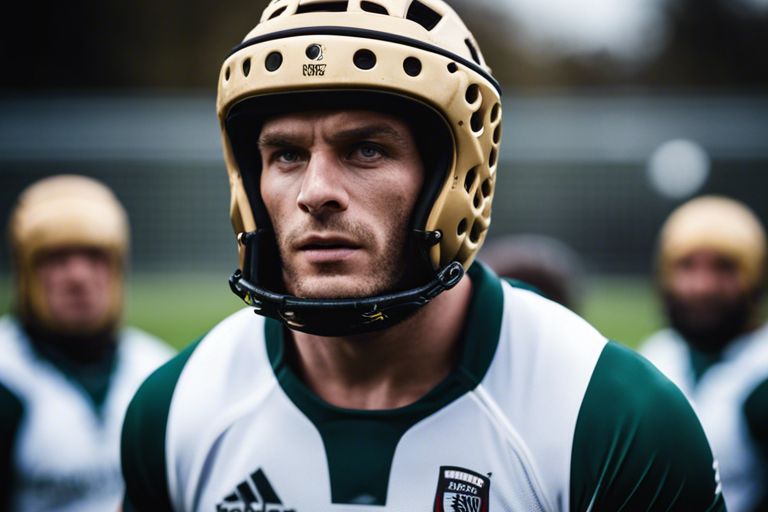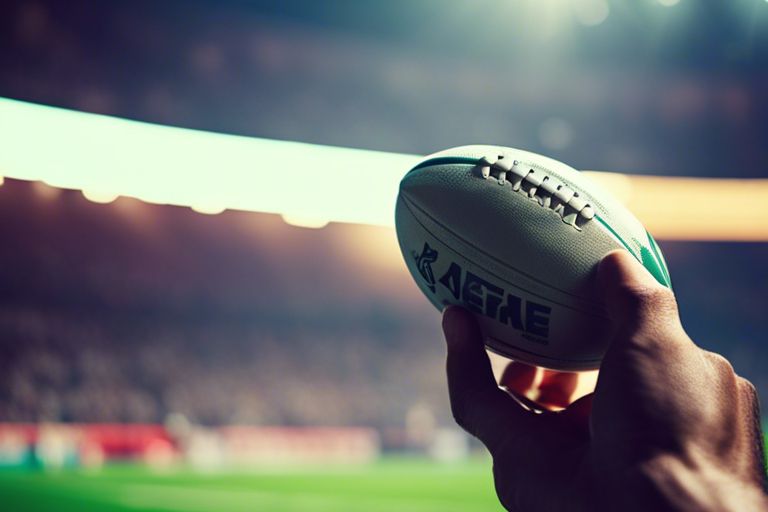Many rugby players choose to wear headgear during matches for added protection and to reduce the risk of head injuries. While headgear does not prevent concussions, it can help absorb impact from tackles and collisions, reducing the severity of blows to the head. Headgear also provides a layer of padding to help minimize cuts, bruises, and abrasions on the forehead and ears. Understanding the purpose and limitations of headgear in rugby is crucial for players looking to enhance their safety on the field.

Key Takeaways:
- Protection: Headgear in rugby provides a layer of protection for players against head injuries and impact during tackles or collisions.
- Prevention: It can help reduce the risk of cuts, abrasions, and minor head injuries while playing.
- Confidence: Some players wear headgear for psychological reassurance, feeling more confident on the field knowing they have extra protection.
- Regulations: Different rugby organizations have specific rules regarding the type of headgear allowed, with some only permitting certain designs and materials for safety reasons.
- Personal Choice: Ultimately, the decision to wear headgear in rugby is up to the individual player, balancing the advantages of protection with the comfort and mobility required for gameplay.
Understanding Rugby Headgear
Design and Materials
Any rugby headgear is designed to provide a layer of protection for players against impact during high-contact play. Typically made from foam padding encased in durable synthetic materials, rugby headgear is lightweight but tough to withstand the rigors of the game.
Differences from Other Sports Helmets
For players accustomed to other sports like American football or ice hockey, rugby headgear may appear less substantial. However, the design of rugby headgear is specific to the needs of the game. Unlike the rigid helmets of other sports, rugby headgear is more flexible to allow for a wider range of head movements crucial for gameplay.

Functions of Headgear in Rugby
Protection Against Cuts and Abrasions
It is crucial for rugby players to wear headgear for protection against cuts and abrasions during the game. The rough and physical nature of rugby can lead to accidental head injuries caused by contact with other players, equipment, or the ground. Headgear provides a layer of padding and protection that helps reduce the risk of sustaining cuts and abrasions on the head and face, minimizing the chances of infection and promoting player safety.
Impact Mitigation and Concussion Prevention
Prevention of head injuries, particularly concussion, is a primary function of headgear in rugby. The impact of tackles, collisions, and falls can result in head trauma that may lead to concussions. Headgear with specially designed padding and construction can help absorb and distribute the force of impact, reducing the risk of concussion. While headgear cannot completely eliminate the possibility of concussions, it serves as an important tool in mitigating the severity of head injuries.
Headgear serves multiple functions in rugby, including protecting players against cuts and abrasions, as well as helping to mitigate impacts and prevent concussions. It is an imperative piece of equipment that promotes player safety on the field.

Limitations and Controversies
Efficacy of Headgear in Preventing Serious Injuries
Many rugby players believe that headgear can offer protection against serious head injuries, such as concussions. However, studies have shown mixed results regarding the effectiveness of headgear in preventing such injuries. While headgear may reduce the impact of minor bumps and cuts, it may not provide significant protection against the forces involved in high-velocity collisions that can lead to concussions.
The Debate Around Mandatory Use
Injuries in rugby are a significant concern, and conversations around player safety often revolve around the use of headgear. The debate on whether headgear should be made mandatory in the sport is ongoing. Some argue that enforced headgear use could potentially lower the risk of head injuries, while others believe that it could create a false sense of security and lead to more dangerous playing techniques.
Debate around the mandatory use of headgear also considers whether it could impact the traditional values and aesthetics of the sport. For instance, some traditionalists argue that rugby is a tough, physical game where players should accept the risks involved without relying on protective gear.
Player Considerations
Despite the varying opinions on the efficacy of headgear in rugby, it remains a common sight on the field. Those interested in the broader discussion around headgear in rugby can find valuable insights in the Reddit thread on Headgear in Rugby League : r/nrl.
Comfort and Personal Preference
For many rugby players, the decision to wear headgear ultimately comes down to personal comfort and preference. Some players believe that wearing headgear provides an added sense of security and protection, while others find it cumbersome and restrictive. Ultimately, the choice to wear headgear is a personal one and varies from player to player.
Rules and Regulations on Headgear Use
With regards to the rules and regulations surrounding headgear use in rugby, most leagues and governing bodies allow players to wear headgear as long as it meets certain safety standards and does not pose a danger to other players. Additionally, the use of headgear is often subject to approval by match officials to ensure that it does not provide any unfair advantage to the wearer.
Understanding the rules and regulations related to headgear use in rugby is necessary for players looking to incorporate headgear into their game. It is important to note that while headgear can provide some protection against minor head injuries, it is not a substitute for proper tackling technique and overall player safety measures on the field.
Summing up
Upon reflecting on the role of headgear in rugby, it is evident that headgear serves multiple purposes to protect players from head injuries. While it does not prevent concussions, headgear can reduce the risk of lacerations, abrasions, and ear injuries. It also provides a sense of security and confidence for players, which can ultimately improve performance on the field. Although headgear is not mandatory in rugby, it is strongly recommended to prioritize player safety and minimize the risk of serious head injuries during gameplay.
FAQ
Q: What does headgear do in rugby?
A: Headgear in rugby is designed to provide some protection to the player wearing it. It can help reduce the impact of collisions and scrums, providing a layer of cushioning to the head and ears. However, it is important to note that headgear does not guarantee protection against all injuries, especially concussions.
Q: Is headgear mandatory in rugby?
A: Headgear is not mandatory in rugby, as it is ultimately up to the player to decide whether or not to wear it. Some players choose to wear headgear for added protection, while others prefer not to wear it due to personal preference or comfort reasons.
Q: How should headgear fit in rugby?
A: Proper fitting of headgear is crucial in rugby to ensure maximum protection and comfort. The headgear should fit snugly around the head without being too tight or too loose. It should cover the temples, ears, and forehead adequately while allowing the player to have full visibility and range of motion. It is recommended to adjust the straps and fastenings according to the player’s head size for a secure fit.




